eliGreenwich
Graded Readers



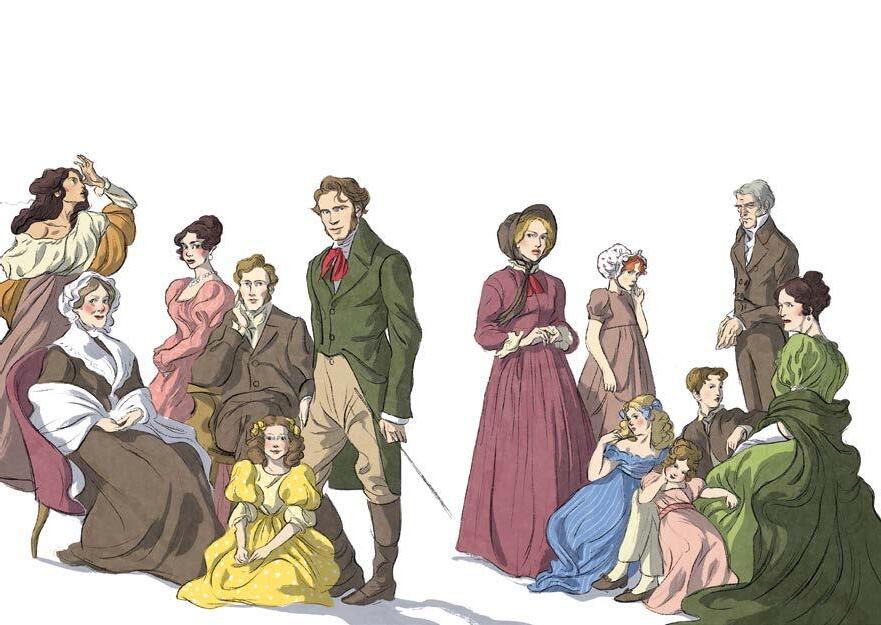
Leggere e ascoltare storie emoziona studenti e insegnanti.
Ecco come eliGreenwich vi farà appassionare!
Volume cartaceo
I readers eliGreenwich sono volumi unici, utilissimi per lo studio in classe o a casa grazie alla loro struttura innovativa, ricchissimi di attività e illustrazioni e curatissimi nella grafica.

Digitale
Ascoltare e leggere un libro dal proprio smarthphone o tablet è ora realtà. Le attività interattive permettono agli studenti di esercitarsi in ogni luogo e momento.












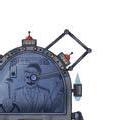

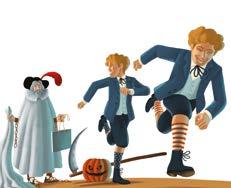














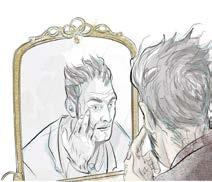

Kate Chopin
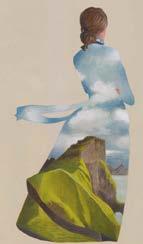
Katherine Mansfield
Virginia Woolf
Edith Wharton
Geoffrey Chaucer
In e Canterbury Tales Geo rey Chaucer takes us back to life at the end of the 14th century. A group of pilgrims meet at the Tabard Inn and set out on a pilgrimage from London to Canterbury to pay homage to the sacred shrine of omas Becket. In order to pass the time during their journey, each pilgrim tells a story and this is how the various characters come to life.
He was born in London in 1343. He was a great English writer and is considered the founder of modern English literature, so much so that he was the rst to be buried at Westminster Abbey in Poets’ Corner. Although he wrote several important works, he is best remembered for his masterpiece, e Canterbury Tales In Chaucer’s time, French and Latin were the languages in which most literary works were produced. Chaucer went against tradition by choosing to write e Canterbury Tales in Middle English, the language of the people, thus elevating English as a literary language.
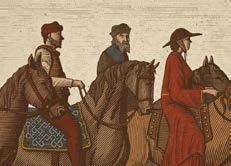

e Strange Case of Dr Jekyll and Mr Hyde is a very famous Gothic novel by the Scottish writer Robert Louis Stevenson. First published in 1886, it became a classic of literature. e novel is set in the dark and gloomy atmosphere of Victorian London and tells the story of a highly respectable scientist,
The Pleasure of Reading
H.G. Wells
Edgar Allan Poe
George Orwell
Sarah Orne Jewett
Virginia Woolf




In una realtà sempre più ‘liquida’, come la definisce Zygmunt
Bauman, la Guida della nuova collana eliGreenwich fornisce gli strumenti per orientarsi in una didattica sempre più complessa che riflette una società anch’essa sempre più complessa: Internet, i Social Media, la globalizzazione e le problematiche mondiali - come ci ricordano i 17 obiettivi della sostenibilità e il cambiamento climaticorichiedono un impegno non solo su scala internazionale ma anche a livello locale. La didattica non si può più giocare solo tra le quattro mura della classe e nemmeno in una direzione esclusiva docente-discente, bensì bisogna dare coordinate agli studenti, perché anche in autonomia si possano orientare nella complessità della realtà di cui
fanno parte e divenire cittadini consapevoli del mondo e del nuovo Millennio.
Questa Guida offre moltissime informazioni sui goals dell’Agenda 2030 e attività innovative per conoscerli meglio; materiale e attività fotografiche per affinare lo Speaking; tabelle di valutazione e autovalutazione; contenuti ed obiettivi dei temi legati all’introduzione dell’Educazione Civica nel curriculum scolastico; suggerimenti per pianificare una lezione introducendo le oggi richiestissime 21st Century Skills; soluzioni degli eliGreenwich readers; trascrizione degli audio extra.
Una Guida che intende essere un meridiano, appunto, per aiutare ogni docente a orientarsi.
Characters

Now the Oscar Wilde Centre, at Trinity College, Dublin, where students study Irish and creative writing.
Quick facts
Name: Oscar Fingal O'Flahertie Wills Wilde
Born: Dublin, Ireland on October 16, 1854
Died: in Paris, France on November 30, 1900 (aged 46)


Nationality:


Irish
Married to:
Constance Lloyd
Children: two sons - Cyril and Vyvyan
Education: Classics* at Trinity College, Dublin and Magdalen College, Oxford
Key works:




The Picture of Dorian Gray (1891)

Lady Windermere’s Fan (1892) The Importance of Being Earnest (1895)
classics (n.pl.)
Early life
Born in 21 Westland Row, he was the second child of William Wilde, an important ear and eye surgeon*, and writer; and Jane Francesca Elgee, a journalist and poet, who wrote under the name ‘Speranza’. Their large and frequent parties attracted important Dublin society There were plenty of opportunities to learn, but Oscar’s parents’ relationship made home life difficult. His father was often depressed, and had frequent extra-marital affairs. This eventually led to a public scandal and a court case against him. His wife supported him throughout the trial, while he refused to speak in his own defence, making people think he was a coward.
Education
Despite being good at languages, Oscar didn’t learn to speak Irish like his father. He was home-schooled, until being sent away to study at Portora Royal School in Enniskillen with his elder brother Willie. An excellent student, Oscar got a scholarship* to read classics at Trinity College, Dublin, and another to Magdalen College, Oxford.
He did well at Oxford University, winning, many prizes like the Newdigate Prize for his long poem, Ravenna (1878). He also became involved in the Aesthetic Movement developing his character as a poseur* and a wit*. He grew his hair long, wore flamboyant* clothes, surrounded himself with beautiful things, constantly entertained his friends and made witty epigrams*.
Doppia pagina di presentazione dei personaggi, con breve descrizione, per introdurre e accompagnare il lettore nel migliore dei modi alla lettura del libro.
At this, my aunt looked frightened.
‘Dear Jane, what is the matter with you? I wish only to be your friend.’
‘I am not your dear and you are not my friend. Send me to school. I hate living here!’
My aunt left the room and I felt a great freedom*
– I had told her everything I thought. Later, I realised I had behaved very badly.
‘I have good news for you,’ Bessie told me that evening, ‘you’re leaving us soon. Now, Miss Jane, you strange, angry child, will you miss me?’
I put my arms round her, ‘You always tell me off*, Bessie, but I will miss you.’
freedom feeling of being free tell someone off tell someone they have done something wrong, and you are angry about it
Jane leaves her friend Bessie to go to school.
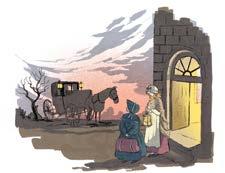
Two days later, at five o’clock on a dark winter morning, Bessie came to wake me. I had a long journey ahead, but I was happy. I would never have to see my aunt or my cousins again.
At the school, I met two young women.

‘This child is young to have made such a journey alone. She looks tired. Give her something to eat and send her to bed,’ one said, touching my cheek softly. Next day, we woke early. After morning lessons, which we all took in the hall, we had a breakfast that tasted so bad no one could eat it. Then we were sent outside. I had so many questions and went to speak to a girl I saw reading a book.
‘What is this school?’
‘It is for girls who are orphans*,’ she said.
‘Are you an orphan?’
‘My mother is dead,’ she replied.





‘Are you happy here?’
‘You ask too many questions. I would like to read.’
This girl was older than me and in a different class. That afternoon she was punished for not knowing the answer to a question. She did not cry from shame or because she was embarrassed, as I would have done. She stood quietly, looking at the floor. This was my first day at Lowood School.
THINK ON!
FOCUS ON YOUR EXAMS
Reading for Specific Information
Read the paragraph about Thornfield and decide if the following statements (1–6) are true (T) or false (F). Then write the words you used to make your decision. The first (0) has been done for you.
Thornfield is in the countryside in the north of England. It is to the south of both Gateshead, where Jane lived with the Reeds, and Lowood, where she went to school. It is a big, old house, with servants and a housekeeper, called Mrs Fairfax. She is a kind and elderly lady who has her own room. The room is warm and bright with a good fire. Mrs Fairfax says Thornfield can be a lonely place and that the owner is often away. Thornfield has three floors. The top floor has a long dark corridor with lots of unused rooms. On this floor is another door with steps up onto the roof. From here you can see lovely views of the countryside. Jane Eyre’s room is on the same floor as her employer’s room. The house has a garden and a drawing room, where the owner often sits. T F 0 Gateshead and Lowood are north of Thornfield. ✔
It is to the south of both Gateshead… and Lowood
1 Thornfield is a large house, that was built shortly before Jane moved there.
2 The house has people working in it, managed by the person who gave Jane her job.
3 The owner of the house doesn’t like to spend money on his employees.
4 In the past, the house was much busier and had more people living in it.
5 At the end of the long dark corridor is a door to the roof.
6 Thornfield is on the edge of a busy village.
21st Century Skills
Analysing and Discussing
1 Charlotte Brontë’s book shocked its Victorian readers. It questioned what many people believed about correct behaviour between men and women, rich and poor. What do you think? Find one argument for and one against for these opinions. Then discuss in pairs.
Opinion For Against
Grace Poole is a dangerous person, and should be sent away from Thornfield.
Mr Rochester is 35 years old but respects Jane who is only
18. He wants to know her opinion and talks to her about his private life.
Jane is right to call herself a fool for falling in love with Mr Rochester – he does not love her and will not marry her.
Speaking – Expressing an Opinion








2 In Chapter 4 we meet Blanche Ingram, Richard Mason, and a strange old woman. Read the descriptions, then decide what you think will happen. Discuss your answers in pairs. Be ready to say why you think this.
1 Blanche Ingram is beautiful and fashionable, plays the piano and sings. She is unmarried, and a close friend of Mr Rochester.
I think she
2 Handsome stranger Richard Mason arrives at Thronfield from Jamaica to see his friend, Mr Rochester, who he knew in Jamaica.
I think he
3 An old woman arrives. She is a fortune teller – she wants to tell the young women about their future.
I think she
Boxer’s last days Scene: In Boxer’s stall after he’s fallen
Clover: Look Boxer, Benjamin and have prepared a nice soft bed of straw for you. You’ll feel better once you’ve had a good sleep.
Benjamin: Yes, don’t worry about a thing, old friend. I’ll stay here and keep the flies off you with my tail.
Boxer: Thank you. You’ve always been such good friends to me. just wish I could see the windmill finished.
Benjamin: Never mind about that stupid windmill. Look what the windmill has done to you! You’ve always worked too hard and for what? To make the pigs fatter while we all starve to death? Look at how thin you are, Boxer!
Clover: Shh Benjamin! Squealer’s coming with the dogs…. (Squealer enters with two of the fierce dogs)
Squealer: Comrade Boxer, I can’t begin to describe how dismayed Napoleon was to hear about your terrible accident. He’s already spoken to Mr Whymper who’s arranging for you to see the vet this week in town.
Clover: Do you mean, you’re going to put him into the hands of a human being? I don’t like the sound of that, comrade Squealer.
Boxer: Don’t worry, Clover. Comrade Napoleon is always right. If he thinks I should see the vet, then I’ll go. trust our leader completely.
(Benjamin says nothing but his tail is moving back and forwards so quickly, it seems he’s trying to fight off thousands of flies.)
Squealer: That’s the right spirit, comrade Boxer. All the animals should be as loyal as you are after all that our great leader Napoleon has done for us. To show you how much he cares, he’s also given me this bottle of pink medicine for you. Take it twice a day, Now, I’ll leave you to rest. Goodnight comrades!
(Exit Squealer and dogs)
Boxer: See, Benjamin, you’re wrong. Our leader Napoleon is so kind that he’s even given me some medicine to take. When did Jones ever give us any medicine? Never!
Clover: Right, well let’s not argue Boxer. It’s not good for you. You need to rest…
Boxer: I know, I know, and don’t want to argue with you, my old friend Benjamin. We’ve known each other for longer than I can remember. really was looking forward to retiring with you my dear friend, but don’t know now if…
Benjamin: Of course, we’ll retire together! What are you talking about?
Just think about getting better and then in a few months, we’ll be together in the field with the warm sunshine on our backs and nothing to do except keep the flies off us with our tails.
Clover: Yes, and I’ll pass by between one job and another to have a little chat until the day retire too.
Boxer: Oh, it sounds wonderful! couldn’t dream of anything better, except maybe Sugarcandy Mountain. Do you think Moses is right? Does it really exist?
Benjamin: You know my feelings on that one, Boxer. We’ve talked about it many times before. For me, it’s just a stupid invention to make us work harder, an empty promise that’s all.
(Clover looks at Benjamin)
Clover: (angrily) I don’t want to hear another word about Sugarcandy Mountain! (kindly) Wait and see Boxer. That vet in town will soon make you better.
Boxer: Oh Clover, I feel a bit afraid about going to the vet’s, as if something bad is about to happen.
Clover: Don’t be silly. Didn’t you say yourself that Napoleon is always right? Let’s get some of this medicine into you and after a good night’s sleep, you’ll feel much better.
Testo con glossario per le parole più difficili. Nei colonnini: spiegazioni di riferimenti culturali o storici nel testo.
Brevi riassunti per aiutare nella comprensione della storia. Didascalie di spiegazione per le immagini.
Ricchissimo assortimento di attività: di comprensione del testo, per gli esami di certificazione, per gli esami di Stato, le 21st Century Skills, l’Agenda
Una sezione finale nella quale viene presentato un copione da recitare in classe, preso da una delle scene più importanti del libro.
Pride and Prejudice mi è piaciuto molto e mi ha fatto riflettere su quanto sia cambiato il ruolo della donna, e anche dell’uomo, nella società. Sono rimasto profondamente male, quando Charlotte ha sposato Mr Collins, perché ormai era la sua “ultima occasione”: una cosa impensabile, oggi. E ho adorato l’ironia di Jane Austen! Roberto, studente
The Sign of the Four si presta a una lettura agevole per uno studente che deve affrontare l’esame Key. Si tratta di un testo pienamente accessibile e gli interventi a lato del testo – riassuntivi e di approfondimento, – aiutano lo studente a fare una sintesi
e saperne di più. Ottimo lavoro, complimenti. Daniela, insegnante
L’antologia Portraits of Women ha toccato il cuore dei miei studenti: Desirée’s Baby di Kate Chopin ci ha portati nella Lousiana intrisa di pregiudizi razziali e forti discriminazioni. Ci siamo immedesimati nel dolore lacerante di Desirée. Marcello, insegnante
Finalmente un’opera tutta al femminile! I racconti di queste grandi scrittrici sono pieni di spunti di riflessione e di temi ancora incredibilmente attuali. Solo parlando e confrontandosi con tematiche così importanti è possibile fare in modo che i ragazzi di oggi diventino uomini e donne consapevoli. Lara, insegnante
Sono appassionata di psicologia, infatti frequento il Liceo delle Scienze Umane.
Leggere The Strange Case of Dr Jekyll and Mr Hyde è stato davvero interessante. Conoscere la storia di questo “doppio” mi ha fatto interrogare su quanto noi esseri umani siamo complicati, personalità mai semplici, come diceva anche Freud.
Francesca, studentessa
Ho usato questo testo in classe e ha dato grandissimi frutti: i ragazzi si sono appassionati e lo hanno letto con grande facilità visto che il livello era adeguato. Attività molto utili, e la sezione Drama ha davvero avuto un valore aggiunto. Recitare in lingua: che traguardo. Remo, insegnante
Le tematiche ambientali stanno particolarmente a cuore ai miei studenti, quindi One Planet, One Goal è stato un libro che hanno praticamente divorato e e che ci ha dato infiniti spunti per realizzare progetti di classe davvero stimolanti, anche in collaborazione con altri colleghi e classi. Barbara, insegnante
The Strange Case of Dr Jekyll and Mr Hyde è un’allegoria della doppia personalità insita in ogni persona, il bene e il male che si alternano incessantemente in ognuno di noi.
A me piacerebbe tanto saperne di più e scoprire cosa scatena l’emergere di una personalità sull’altra. Bellissimo leggere un libro in lingua e capirlo!
Jacopo, studente
Potete mandare le vostre opinioni e i vostri commenti a:
info@gruppoeli.it
- Present Simple and Present Continuous
- Past Simple and Past Continuous
- Present Perfect Simple: indefinite past with ever and never
- Future with will and going to
- Imperative: 2° person
- Modals: can, could, would, will, shall, should, may, have to, must, mustn’t, need, needn’t
- Zero and 1st conditionals
- Possessive: use of ’s and s’
- Countable and uncountable Nouns
- Comparative and Superlative Adjectives
- Adverbs of frequency, mannar, time
- Prepositional phrases: place, time and movement
- Relative Pronouns: who, what, which
- Co-ordination with but, and, or, then, so, because, if
- Some, any, much, many, a lot, a little, a few, all, every
- All the structures used in level A2
- Regular and irregular Verbs
- Imperatives
- Use of Future with Present Continuous, will, shall, going to
- Modals: would, for deduction with can’t, have to, must
- Conditionals: type zero and type 1
- Passive: present and past
- Common phrasal verbs
- Defining relative clauses with who and where
- Reflexive, quantitative and impersonal pronouns
- Relative Pronouns: whom, where, WH questions in the past
- Adverbs of place, direction, sequence
- Intensifiers such us: so, such, as, too, enough
- Connectives such as: while, when, until, to
- Ordinal and cardinal numbers
- All the structures used in previous levels
- Present Perfect with already, yet, ever, for, since
- Indefinite Past with yet, already, still and Recent Past with just
- Past Simple vs Present Perfect
- Past Continuous vs Past Simple
- Type 2 Conditionals
- Modals: will, might, ought to, needn’t, used to
- Gerund and propositions followed by gerund
- Adjectives: quantative, compound, order
- Intensifiers such as too and rather
- Connectives such as although, whereas, unless, either… or
- Phrasal Verbs
- Question tags
- All the structures used in previous levels
- Present Perfect Continuous
- Past Perfect
- All passive forms
- Type 3 Conditionals
- Get used to + -ing
- Defining and non defining relative clauses with: which and whose
- Clauses of concession: even though, in spite of, despite
- All the structures used in previous levels
- Future perfect, Future continuous, Future Perfect Continuous
- To be likely to (another way of expressing the future)
- Past Perfect Continuous
- Complain and regret
- Use and omission of the definite/indefinite article quantifiers such as a great deal of, hardly any, the majority of
- Either/neither
- Despite, in spite of
- All the structures used in previous levels
- Mixed Conditionals, Modals with Perfect Infinitive, Wish and Hope, Verbs followed by Gerund and/or Infinitive, Passive with Modals, Had better Would rather, Reported Speech, emphatic structures: Inversion
Novità
Stage 1 A2
H.G.Wells
Lewis Carroll
Alice in Wonderland
Sir Arthur Conan Doyle
The Sign of the Four
Stage 2 B1.1
Novità
George Orwell
Animal Farm
Kate Chopin, Elizabeth Gaskell, Katherine Mansfield, Edith Wharton, Virginia Woolf
Portraits of Women
Stage 3 B1.2
Novità
Charlotte Brontë
Jane Eyre
Oscar Wilde
The Canterville Ghost
Robert Louis Stevenson
The Strange Case of Dr Jekyll and Mr Hyde
Stage 4 B2.1
Katherine Mansfield, James Joyce,
Novità Novità
Oscar Wilde, Rabindranath Tagore, Mark Twain
Tales of Friendship
H.G. Wells, Edgar Allan Poe, George Orwell, Sarah Orne Jewett, Virginia Woolf
One Planet, One Goal
Geoffrey Chaucer
The Canterbury Tales
Stage 5 B2.2
Oscar Wilde
The Picture of Dorian Gray
Mary Shelley
Frankenstein
Jane Austen
Pride and Prejudice



The Time Traveller è un inventore. Costruisce una macchina del tempo e viaggia nel futuro fino all'anno 802.701. Trova una bellissima terra abitata dagli Eloi, un popolo pacifico ma apatico e infantile, e fa amicizia con una giovane ragazza di nome Weena. Incontra anche creature mostruose e selvagge, i Morlock, che vivono sottoterra. Pubblicato nel 1895, è un racconto di fantascienza e H.G. Wells è certamente tra i creatori del genere.
Adattamento, attività e dossier
Claire Moore
Illustrazioni Francesco Giustozzi



formato A5 pp 80
ISBN 978-88-536-3975-2
prezzo € 9,80



Dalla magica penna dello scrittore inglese Lewis Carroll nasce, nel 1865, Alice in Wonderland, un’opera in cui il confine tra realtà e fantasia si dissolve. Alice, la protagonista della storia, è una bambina che si addormenta nel giardino di casa e si ritrova a vivere una realtà in cui ogni regola conosciuta è capovolta. Un mondo sottosopra!
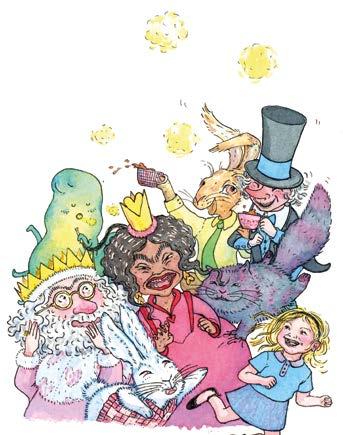
Nel sogno incontra
tantissimi personaggi, come il Coniglio Bianco, il Cappellaio Matto, la Lepre Marzolina e la Regina di Cuori e, ogni volta, vive avventure fantastiche.
Adattamento, attività e dossier
Claire Moore
Illustrazioni



Emma Lidia Squillari
Un’opera adatta a tutti, un capolavoro senza tempo, un testo ricco di spunti di riflessione che ci costringe a uscire dalla nostra confort zone e ci porta oltre il conosciuto.
formato A5 pp 112
ISBN
978-88-536-3772-7
prezzo € 9,80
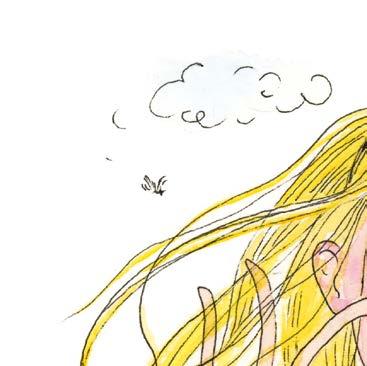
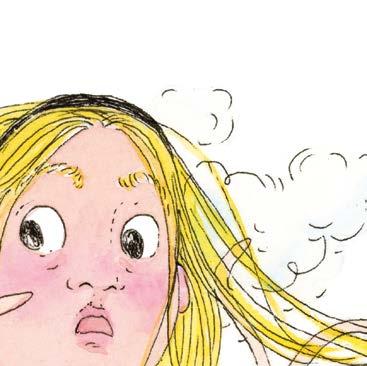







The Sign of the Four




Adattamento, attività e dossier
Claire Moore
Illustrazioni
Marco Bregolato
The Sign of the Four è uno dei capolavori di Sir Arthur Conan Doyle, che vede protagonisti l’acuto – e all’inizio un po’ annoiato – detective Sherlock Holmes e il suo fidato aiutante Watson. Ma la noia si trasforma presto in adrenalina pura, quando la giovane Mary Morstan vuole scoprire cosa sia successo a suo padre, scomparso anni prima, dopo aver rubato un tesoro. Perché lei, ogni anno, riceve una perla? Perché un uomo misterioso ha chiesto di incontrarla? Tra omicidi e frenetici inseguimenti sul Tamigi, Holmes riuscirà a unire i tanti strani indizi che vanno dall’isola di Tonga ai salotti di Londra, in una brillante risoluzione del caso.
formato A5 pp 112
ISBN 978-88-536-3335-4
prezzo € 9,80

STAGE 2 B1.1



Novità
Adattamento, attività e dossier
Silvana Sardi
Illustrazioni
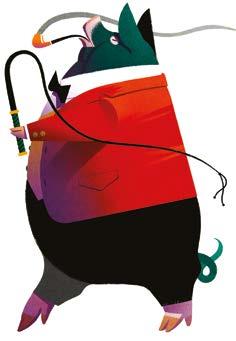
Andrea Rivola
formato A5 pp 96
ISBN 978-88-536-3976-9
prezzo € 9,80
Eric Arthur Blair è meglio conosciuto con il suo pseudonimo, George Orwell, che scelse perché il fiume Orwell nel Suffolk era uno dei suoi posti preferiti. Romanziere, saggista, giornalista e critico, è considerato uno dei più grandi scrittori britannici. Nelle sue opere critica qualsiasi tipo di regime politico dittatoriale e sostiene fortemente la democrazia. Nato in India nel 1903 da famiglia scozzese, cresce e studia in Inghilterra. Dopo un periodo trascorso in Birmania, dove lavora come ufficiale della Polizia Imperiale, torna in Inghilterra per concentrarsi sulla scrittura. Le sue opere più famose sono il breve romanzo allegorico Animal Farm e Nineteen Eighty-Four, un romanzo di fantascienza sociale distopico, da cui usiamo ancora espressioni come "Grande Fratello".
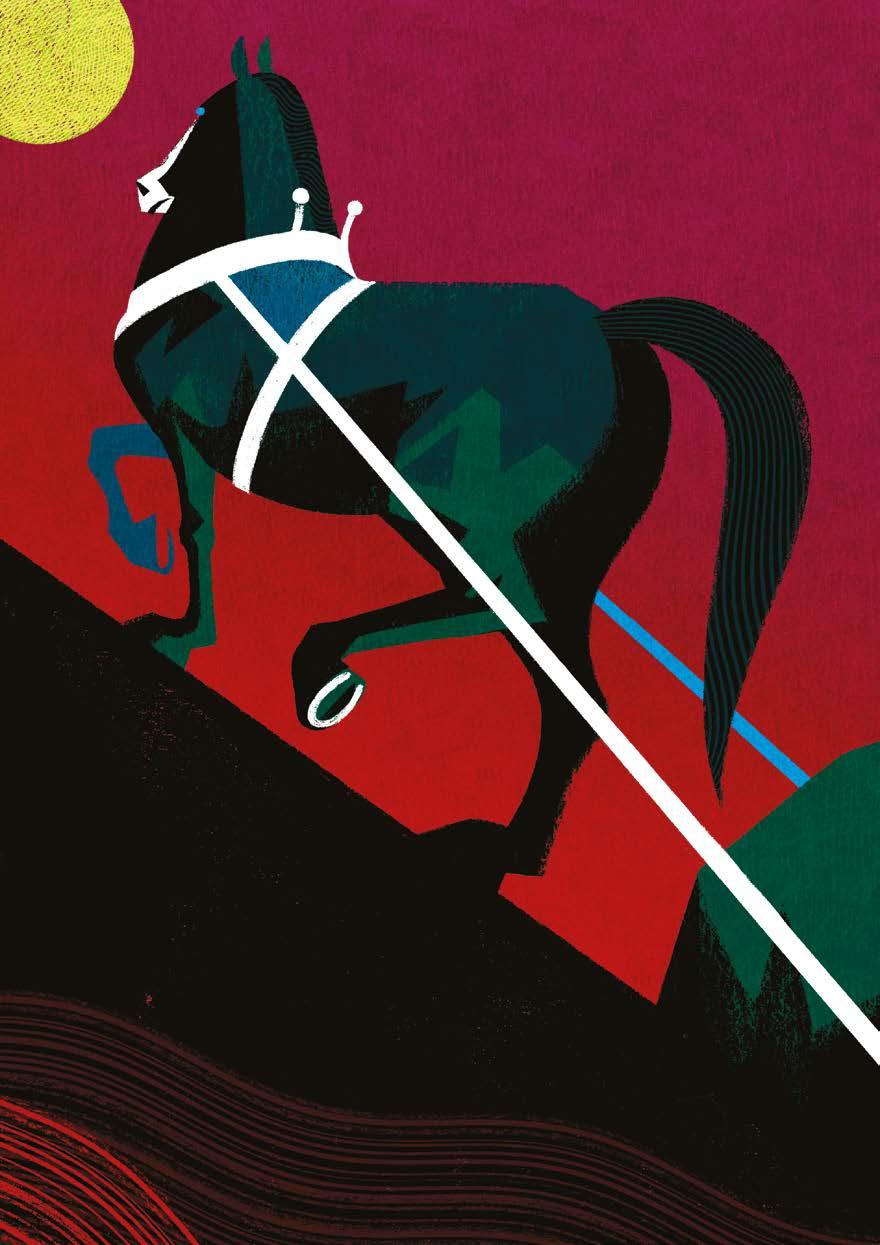
STAGE 2 B1.1



Kate Chopin, Elizabeth Gaskell, Katherine Mansfield, Edith Wharton, Virginia Woolf
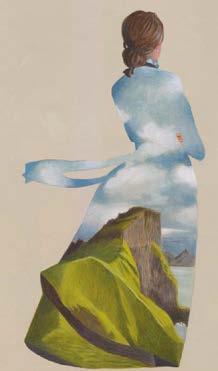
Elizabeth Gaskell
Kate Chopin
Katherine Mansfield
Virginia Woolf
Edith Wharton
Selezione delle opere Gaia Ierace
Adattamento, attività e dossier
Silvana Sardi
Illustrazioni
Alberto Macone
Elizabeth Gaskell, Kate Chopin, Katherine Mansfield, Virginia Woolf, Edith Warton: 5 donne, 5 scrittrici, 5 racconti. Il filo rosso che collega queste storie è il tentativo di ritrarre un universo femminile in cui le donne vogliono essere protagoniste del loro destino. Temi universali come il matrimonio, la perdita, la libertà e il rispetto riempiono la mappa intricata delle loro vite. I lettori cercheranno di mettersi nei panni di donne molto diverse tra loro, che cercano il controllo sulle loro vite nonostante le circostanze avverse.
formato A5 pp 144
ISBN 978-88-536-3336-1
prezzo € 9,80
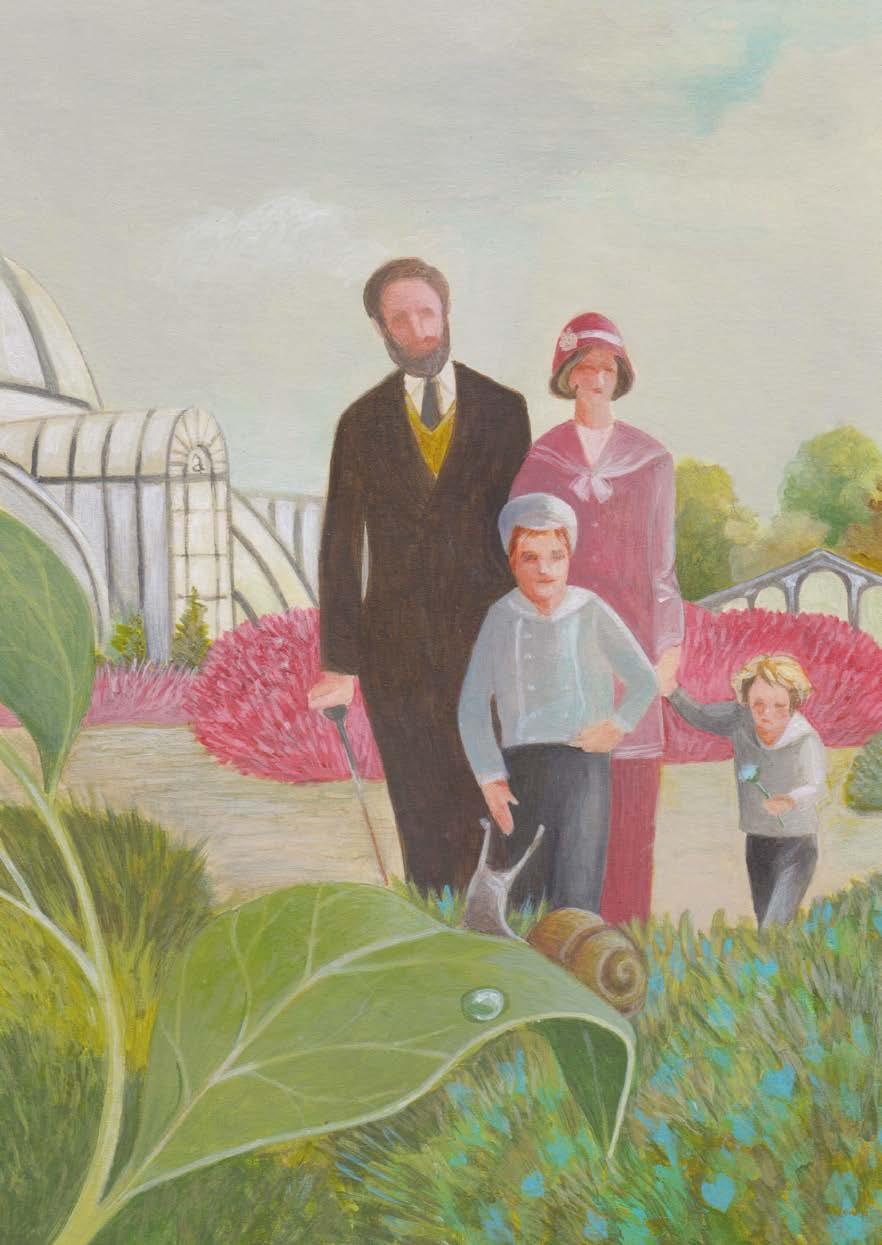
STAGE 3 B1.2



Novità
Charlotte Brontë
Jane Eyre
Charlotte Brontë

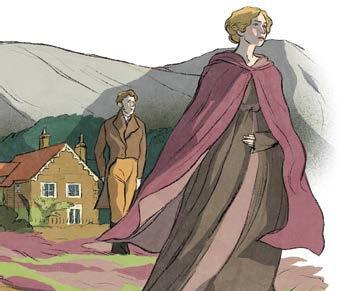
Jane Eyre
Adattamento, attività e dossier
Elizabeth Ferretti
Illustrazioni
Giacomo Agnello Modica
formato A5 pp 112
ISBN 978-88-536-3977-6
prezzo € 9,80
Jane è un'orfana di 10 anni che vive con la famiglia della sua crudele zia. Pur continuamente maltrattata, Jane non è una bambina sottomessa e si ribella alle ingiustizie, tanto che la zia Sarah decide di mandarla a Lowood, una severa e malsana scuola di beneficenza per orfani. Dopo anni durissimi in quell’ambiente terribile, prima come allieva e poi come insegnante, Jane trova lavoro come istitutrice nella lontana Thornfield Hall, dove incontra il duro e severo Mr Rochester. Tra i due sboccia l’amore, nonostante la grande differenza sociale, tanto che Mr Rochester chiede a Jane di sposarlo. Ma proprio durante la cerimonia di nozze si svela un terribile segreto, che distrugge senza speranza i sogni di Jane. Jane troverà mai la felicità che merita?
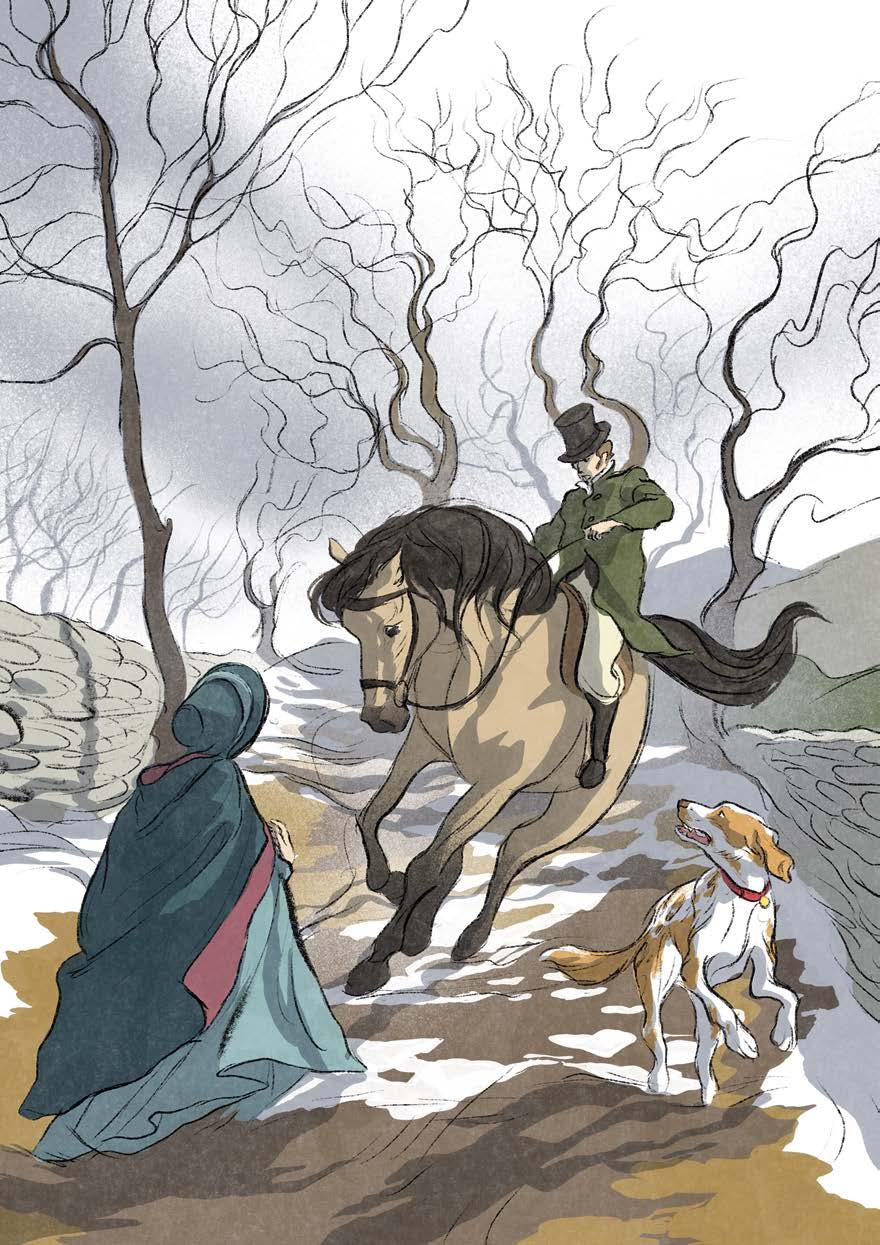
STAGE 3 B1.2



Oscar Wilde
The Canterville Ghost
Oscar Wilde
The Canterville Ghost
Adattamento, attività e dossier Catrin Morris
Illustrazioni
Toni Demuro
The Canterville Ghost è un racconto giovanile - a metà tra il gotico e l’umoristico - scritto da Oscar Wilde e pubblicato originariamente a puntate, nel 1887, sulla rivista Court and Society Review. Narra la storia di una famiglia americana, gli Otis, che si trasferisce a vivere in Inghilterra, nel castello di Canterville, infestato dal fantasma di Sir Simon, costretto a vivere in eterno nel castello per aver assassinato sua moglie. Tra la famiglia e il fantasma si crea subito una forte ostilità che dà vita a scherzi più o meno macabri. Grazie a Virginia, la figlia quindicenne, il destino del fantasma cambierà e Sir Simon potrà finalmente lasciare il castello.
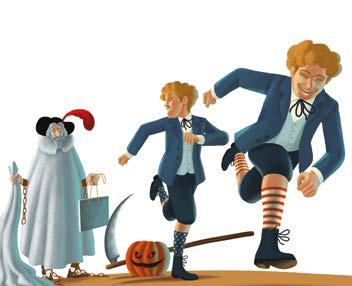
formato A5 pp 112
ISBN 978-88-536-3778-9
prezzo € 9,80

STAGE


The Strange Case of Dr Jekyll and Mr Hyde

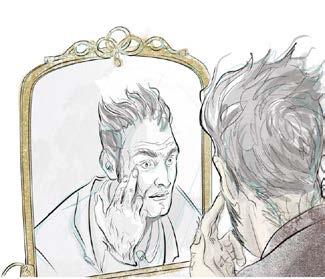
The Strange Case of Dr Jekyll and Mr Hyde è un famosissimo racconto gotico dello scrittore scozzese Robert Louis Stevenson, pubblicato nel 1886 e diventato un classico della letteratura.
Il racconto è ambientato nelle atmosfere cupe di una Londra vittoriana e racconta le vicende di uno scienziato molto rispettabile, Dr Jekyll, e del suo alter ago, il malvagio Mr Hyde, creato dagli esperimenti dello stesso Dr Jekyll. Il volume è una combinazione di mistero e horror, stimola la lettura a ogni pagina e ci fa stare col fiato sospeso fino alla fine.
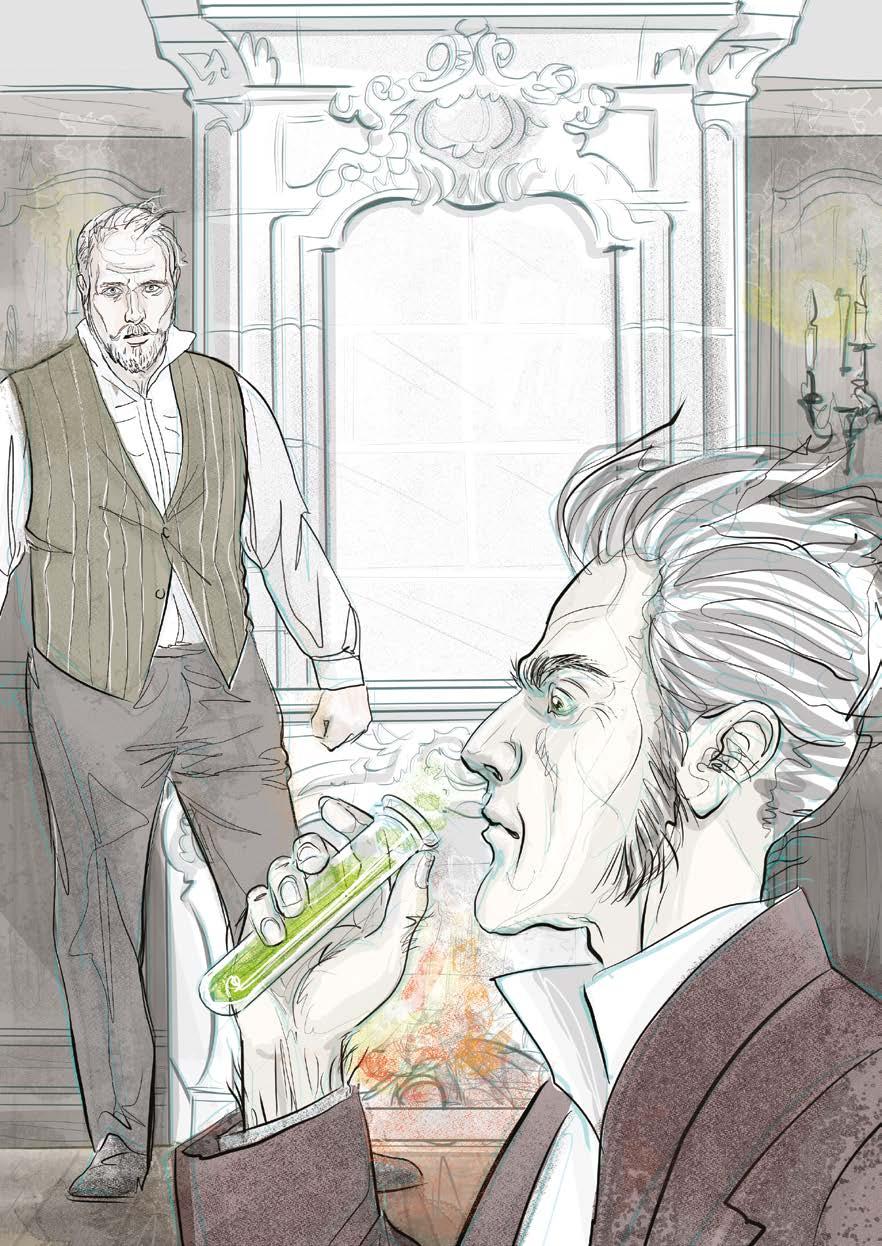
STAGE 4 B2.1



Katherine Mansfield, James Joyce, Oscar Wilde, Rabindranath Tagore, Mark Twain
Katherine Mansfield
James Joyce
Oscar Wilde
Rabindranath Tagore
Mark Twain
Adattamento, attività e dossier
Alex Peet
Illustrazioni

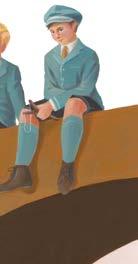
Alberto Macone
tema di questa raccolta di racconti è l’amicizia. Ognuna delle cinque storie riflette un diverso aspetto o tipo di amicizia. Le storie di Mansfield e Joyce descrivono le amicizie d’infanzia nei primi anni del 1900. Mansfield descrive l’amicizia tra ragazze sullo sfondo della mentalità tradizionale delle piccole
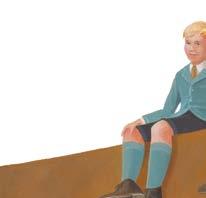
città della Nuova Zelanda, mentre Joyce si concentra sulle amicizie tra scolari a Dublino.
Il racconto di Wilde mette in discussione la natura della vera amicizia tra adulti, e Kabuliwala di Tagore esplora l'amicizia tra culture, classi e generazioni diverse e Twain scrive del migliore amico dellʹuomo e del legame tra umani e animali.
formato A5
pp 144
ISBN 978-88-536-3978-3
prezzo € 9,80

Il
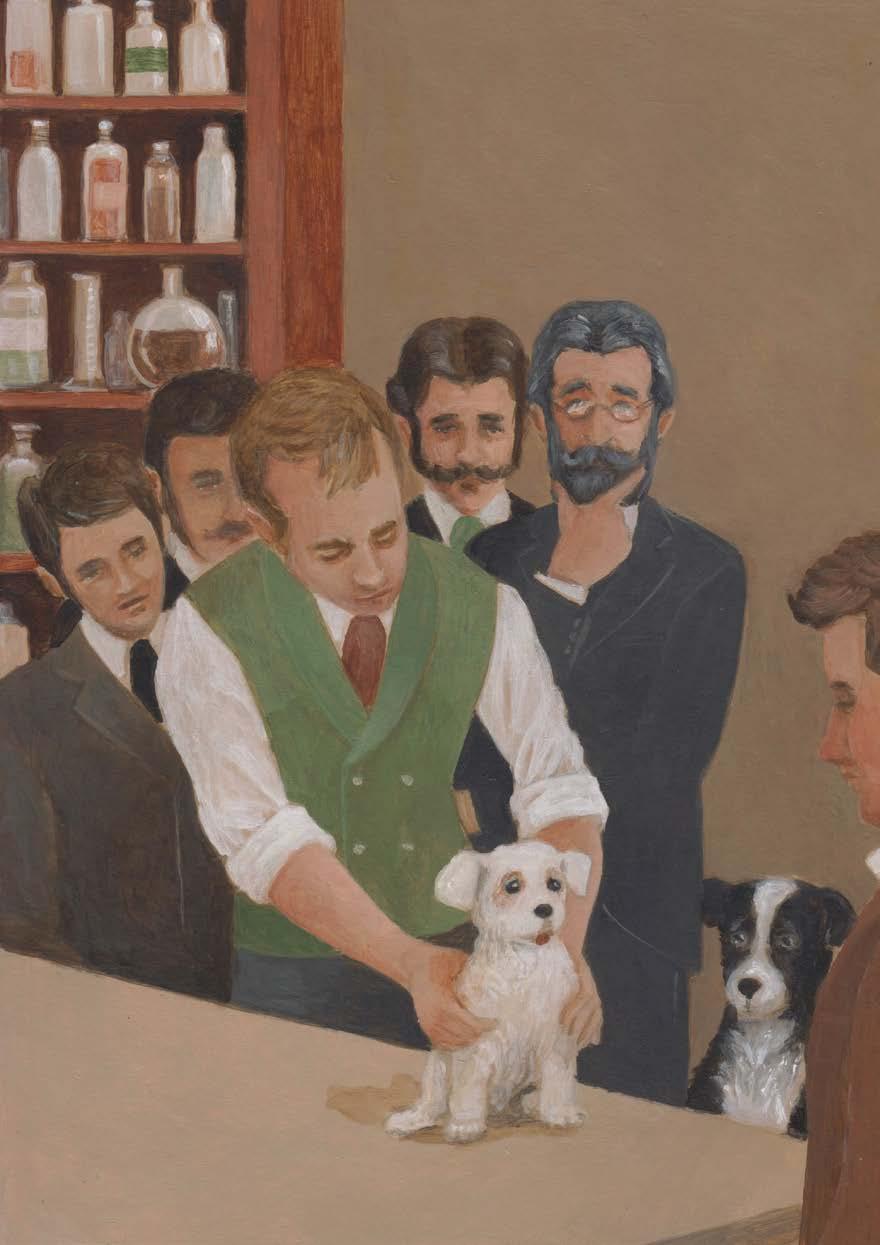
STAGE 4 B2.1



FOR
H.G. Wells, Edgar Allan Poe, George Orwell, Sarah Orne Jewett, Virginia Woolf
One Planet, One Goal
H.G. Wells, Edgar Allan Poe, George Orwell, Sarah Orne
H.G. Wells
Edgar Allan Poe
George Orwell
Sarah Orne Jewett
Virginia Woolf
One Planet, One Goal
Adattamento, attività e dossier
Alex Peet
Illustrazioni
Daniela Costa
Jewett, Virginia Woolf: cinque scrittori, cinque storie che indagano il tema dell’ambiente.
I cinque racconti hanno un unico protagonista, il nostro Pianeta. Herbert George Wells ci mostra come la ricerca di cibo ha permesso a strane creature di popolare nuovi territori, Edgar Allan Poe celebra il potere di Madre
Natura, George Orwell e Sarah Orne Jewett riflettono su pratiche di caccia degli animali e Virginia Woolf ci mostra il potere della gentilezza.

formato A5 pp 144
ISBN
978-88-536-3774-1
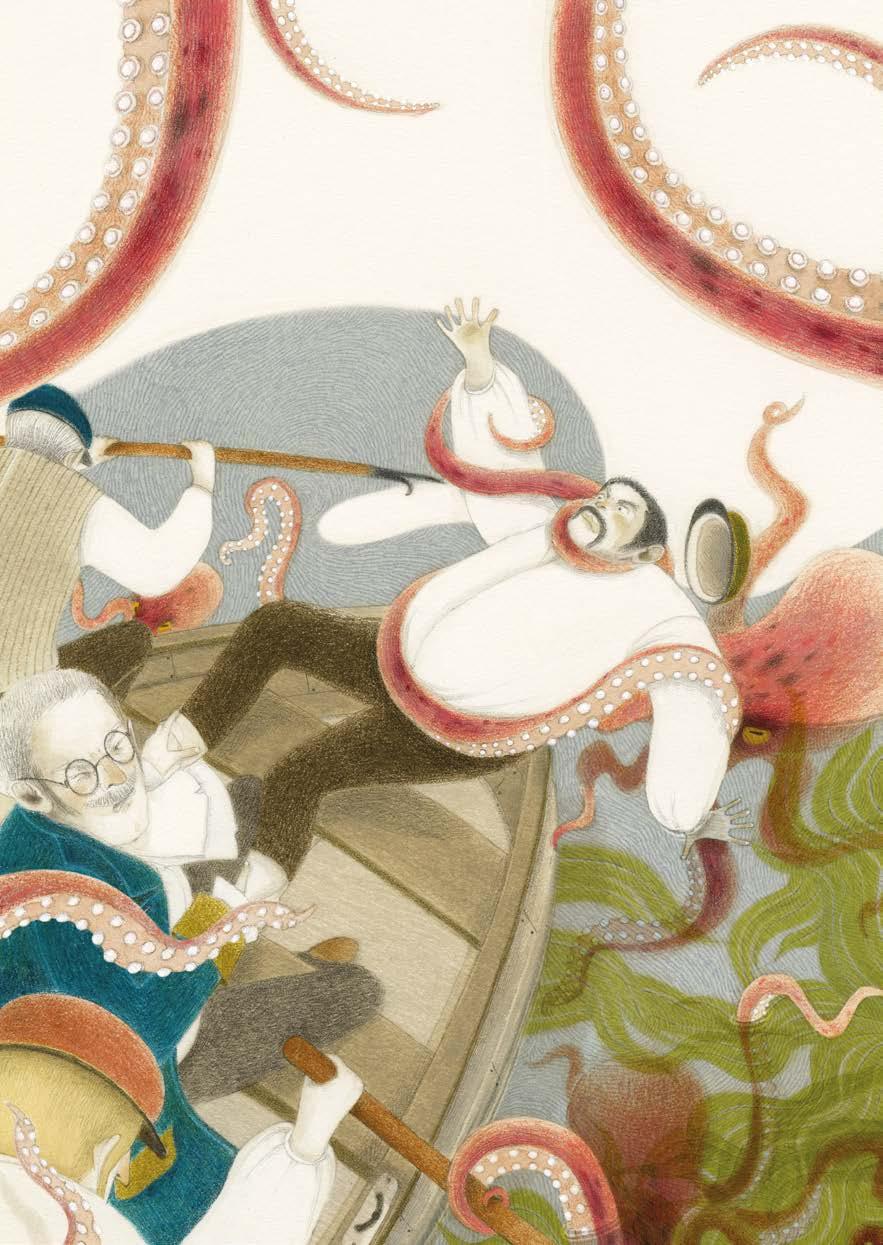
STAGE 4 B2.1



FOR FIRST
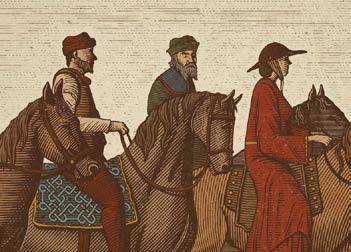
Geoffrey Chaucer ci porta alla fine del XIV secolo: un gruppo di pellegrini si riunisce per andare da Londra a Canterbury per rendere omaggio alle sacre reliquie di Thomas Beckett.
Per alleggerire le tante ore di viaggio ogni pellegrino racconta, a turno, una storia.
Ed è così che prendono vita i vari personaggi, come il prete, il cavaliere, il cuoco, il frate e il mercante che appassionano con storie d’amore, di avventura, di onestà quanto mai attuali ancora oggi.
Adattamento, attività e dossier
Alex Peet
Illustrazioni
Andrea De Luca
formato A5 pp 112
ISBN 978-88-536-3338-5
prezzo € 9,80

STAGE 5 B2.2



FIRST Novità
Oscar Wilde

The Picture of Dorian Gray
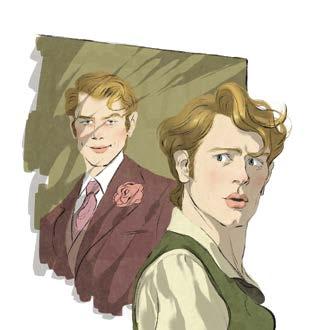
The Picture of Dorian Gray è l'unico romanzo scritto da Oscar Wilde. Pubblicato per la prima volta su Lippincott’ s Monthly Magazine nel 1890, con altri sei capitoli viene pubblicato come libro nel 1898. È un horror gotico, fantasy morale, che racconta la storia faustiana di un uomo che vende la sua anima al diavolo per ottenere potere, denaro e giovinezza: al suo posto, infatti, invecchia il suo ritratto che diventa brutto quanto le sue cattive azioni.
Adattamento, attività e dossier
Catrin Morris
Illustrazioni
Giacomo Agnello Modica
Come per molti romanzi gotici i temi centrali sono: la doppia natura dell'uomo, apparenza e realtà, il bene e il male.
formato A5
pp 112
ISBN 978-88-536-3979-0
prezzo € 9,80
The Picture of Dorian Gray esplora anche idee di edonismo ed estetismo. I vittoriani furono profondamente scioccati dal romanzo, che fu usato come prova della mancanza di valori morali di Wilde al suo processo.

STAGE 5 B2.2



Mary Shelley Frankenstein
Victor Frankenstein è uno studente di scienze all’università di Ingolstadt, in Germania e la sua più grande ambizione è creare la vita.

Mary Shelley Frankenstein
Adattamento, attività e dossier
Elizabeth Ferretti
Illustrazioni
Silvia Pèrtile
Tenta, così, un esperimento incredibile: con pezzi di cadaveri e un segreto noto solo a lui, crea un essere nuovo e riesce a dargli vita. Un risultato straordinario che però fa precipitare Victor e tutte le persone che ama in un incubo di paura e distruzione, che lo costringerà a scappare per tutta Europa.
Pubblicato nel 1818, Frankenstein è un romanzo rivoluzionario nella tradizione gotica, che pone domande sulla scienza importanti ancora oggi.
formato A5 pp 144
ISBN 978-88-536-3776-5
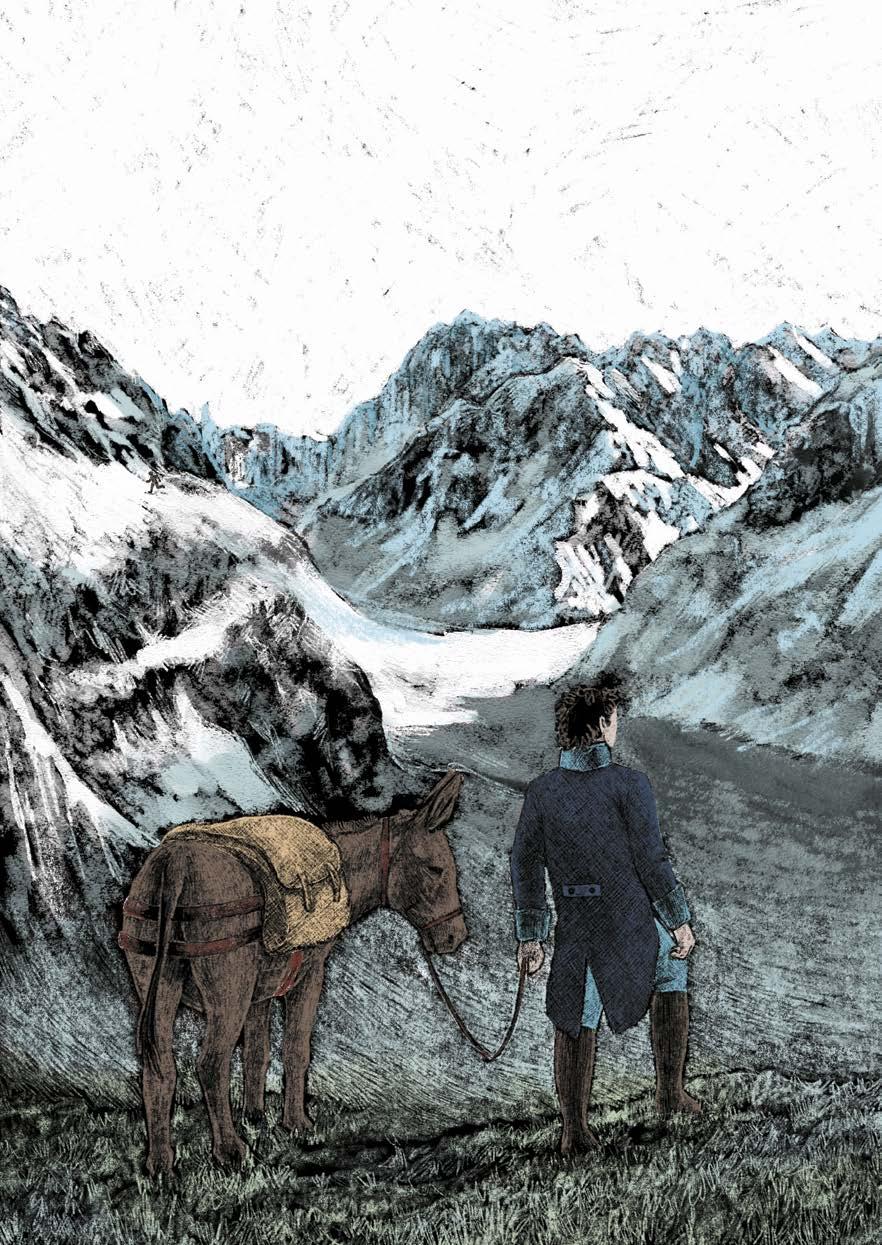
STAGE 5 B2.2



A Longbourne, in Inghilterra, vive Mrs Bennet con le cinque figlie. Elizabeth, la secondogenita, è bella, spiritosa, istruita, intelligente e per questo sua madre vuole combinare per lei, come per le altre figlie, un buon matrimonio.
Adattamento, attività e dossier
Elizabeth Ferretti
Illustrazioni
Mattia Pedrazzoli
Elizabeth, però, vuole sposarsi solo per amore e non per interesse. Quando conosce Mr Darcy, lo scapolo più ambito di tutta l’Inghilterra, lo trova presuntuoso e arrogante, ma questa è solo la prima impressione… un capolavoro di Jane Austen che continua ad appassionare intere generazioni.

formato A5 pp 114
ISBN 978-88-536-3339-2
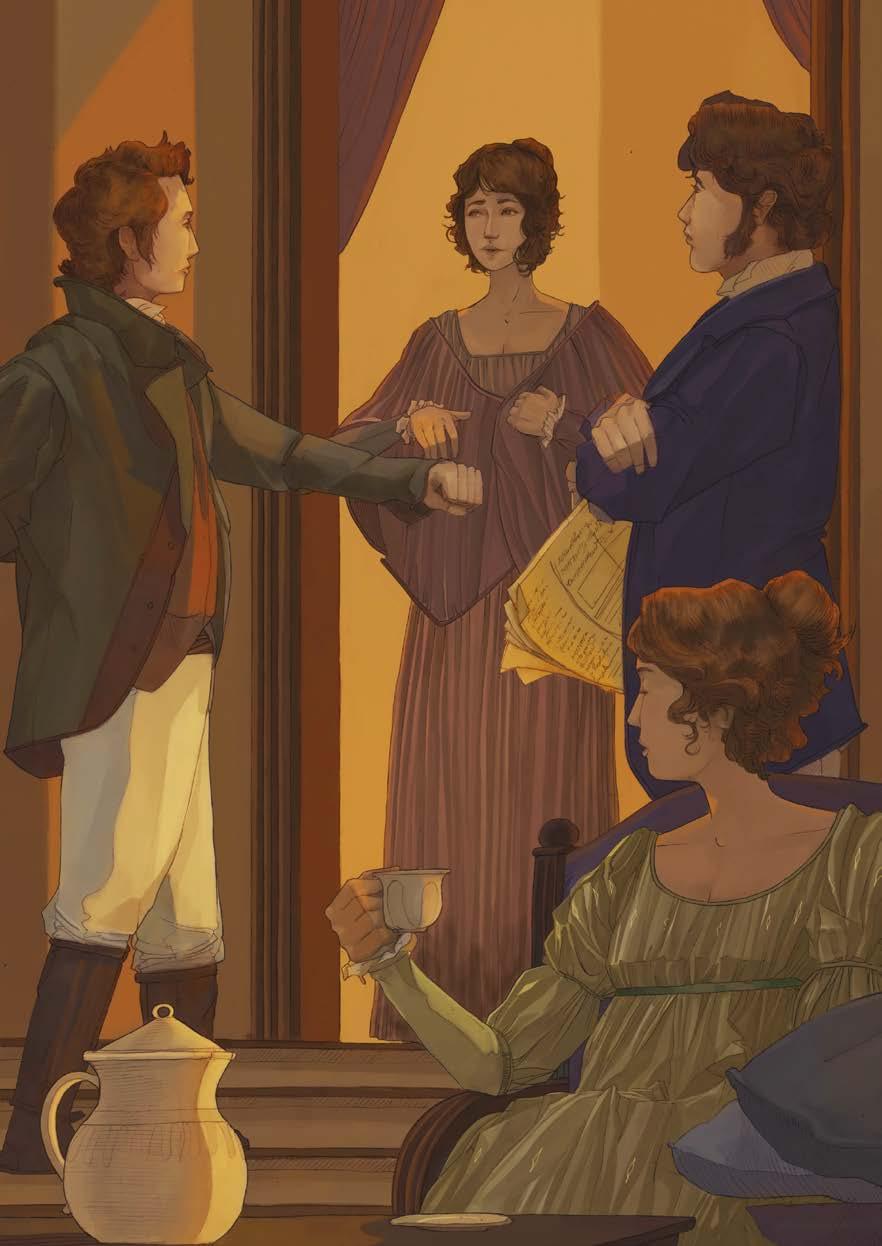
Vari testi nella collezione ELI Greenwich sono romanzi famosi di cui è avvenuta anche la trasposizione cinematografica. In particolare i livelli B1 e B2 presentano titoli che si prestano, dopo un’attenta lettura, ad essere anche visti sullo schermo, ad esempio The Strange Case of Dr Jekyll and Mr Hyde, Pride and Prejudice, Frankenstein, Alice in Wonderland, The Sign of the Four
Ne può nascere un confronto spontaneo tra libro e versione cinematografica, ma ne può sortire anche un’attività più strutturata come la stesura di una “Movie Review”, che pur avendo molti tratti in comune con la “Book Review”, ha anche un suo lessico peculiare e un contenuto che si sviluppa trattando anche aspetti diversi.
Title a short catchy sentence of about 4 / 6 words
Intro state openly what you are reviewing and why. Grab your readers’ attention

1st Body paragraph more objective: general description, some element of the plot, characters, special effects, etc.
2nd Body paragraph more subjective: personal opinion
Conclusion
summarize the main idea and why you recommend or you don’t recommend the movie
- Write a “A catchy Title” – Un titolo accattivante
- “X X X” is one of the most interesting/ entertaining / humorous/dramatic/tragic/ etc. drama/ adventure/romantic films/comedies/tragedies I have ever seen. X X X, the director, manages to … . The film stars XXX and YYY in the role of … .
- The film plot focuses on … , so/therefore it tackles … / it is based on … . However, … . Especially when … .
- As for / As far as the special / visual effects, they are … . By way of example / For example, in the case of … . I think / In my opinion … .
- Summing up / In conclusion I would /wouldn’t recommend the film to anyone who likes … . Some advice … . It is worth watching, you will not feel disappointed / I am sure you will not regret going to watch it.
Intro
The film is about…
The film is directed by…
This film stars…
Body
The story is based on …
The main theme/s is/ are …
It is set in (time and place) …
There are many memorable moments/characters …
The best/the worst part … On the plus side, / on the down side, … On the one hand, /on the other hand, …
In addition (to) / As a result (of) / As you will see …
Because of/ due to …
All things considered / To conclude / In conclusion/ All in all/ Summing up, I recommend / I would/wouldn’t recommend to … ,
All things considered / To conclude / In conclusion/ All in all/ Summing up the film was…
I wouldn’t hesitate to recommend…
Although I enjoyed it, I would not recommend it for….
It’ s one of the best movies/films I’ve ever seen.
Although I do not usually like/ am not usually keen on … I am pleased with it / I am glad that I decided to go.
The film is worth watching/ being seen …
1 Number these sentences in the order that they happen in the story. Be careful! One sentence is incorrect. Which one?
A Alice’s sister talks to the White Rabbit.
B Alice wakes up under a tree.
C Alice plays a game of croquet.

D Alice swims with a mouse.
E Alice falls down a rabbit hole.
F The Cheshire Cat appears in a tree.
G Alice goes to the White Rabbit’s house.
H Alice talks in a courtroom.
2 Which character in the story…

1 sits in a tree?
2 likes playing croquet?
3 wears a pair of gloves?
4 only appears at the beginning and the end of the story?

5 swims with Alice?
6 flies out of a chimney?
7 throws a baby at Alice?
8 cries a lot?
3 Answer the questions about Chapter 1.
1 Alice finds a cake with a the courtroom with a cup of te
2 The Mouse doesn’t b the words “Eat me” on it.
3 The White Rabbit thinks c a piece of mushroom.
4 Alice nibbles on d like cats or dogs.
5 The baby turns e Alice is the housemaid.
6 Alice meets the Mad Hatter and f people to prison.
7 The Queen likes sending
8 The Mad Hatter comes into
into a pig.
the March Hare at the tea party.
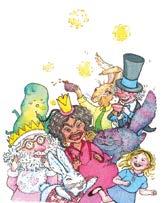
4 Complete the sentences with the correct verbs.
1 Without a thought, she quickly jumps / is jumping into the hole after the rabbit.
2 “How is / did that happen?” she asks herself.
3 As she is looking / looked around her, she hears a bark.
4 “I am not knowing / don’t know what you’re talking about,” says Alice.
5 “I am sitting / will sit here until tomorrow,” says the footman.
6 “…We make / made a mistake. The Queen wants red rose trees and we put this white one here by mistake.”

7 “When we were / was little,” continues the Mock Turtle…
8 “What are / is they doing?” Alice asks the Gryphon.

5 Comple te the text with the words in the box. near of it am on the a and “He thinks I (1) his housemaid,” Alice says to herself. After some time, she sees a little house. There is a name (2) the door – “W. RABBIT”. Alice goes into the house (3) runs upstairs. She goes into a little room. She sees a table (4) the window with a fan and two or three pairs of white gloves. She takes (5) fan and a pair (6) gloves and turns to leave the room. Then she sees (7) little bottle. There is no label with the words “DRINK ME” but she takes the cork out of the bottle anyway and drinks (8)
6 Who is your favourite character in the book? Write a short description and say:
• what your character looks like;
• something about your character’s personality;
• where and when Alice meets your character;
• how important you think this character is to the story.
Il Meridiano di Greenwich è quella linea immaginaria che si trova esattamente alla longitudine 0, da cui si parte per misurare la distanza di tutti i luoghi della terra. Qui, est e ovest si incontrano. Così come il Meridiano di Greenwich è il luogo d’incontro tra lo spazio e il tempo, la collana eliGreenwich è il luogo d’incontro di tutti quei lettori che in queste pagine si immergono in tempi e spazi diversi, conoscendo personaggi, storie, mondi reali o immaginari. Un viaggio che attraversa civiltà, mari e terre conosciute o inesplorate, nel suo ideale percorso dal Polo Nord al Polo Sud. Un viaggio che è un’avventura: l’avventura della lettura, del perdersi tra le pagine di un libro.